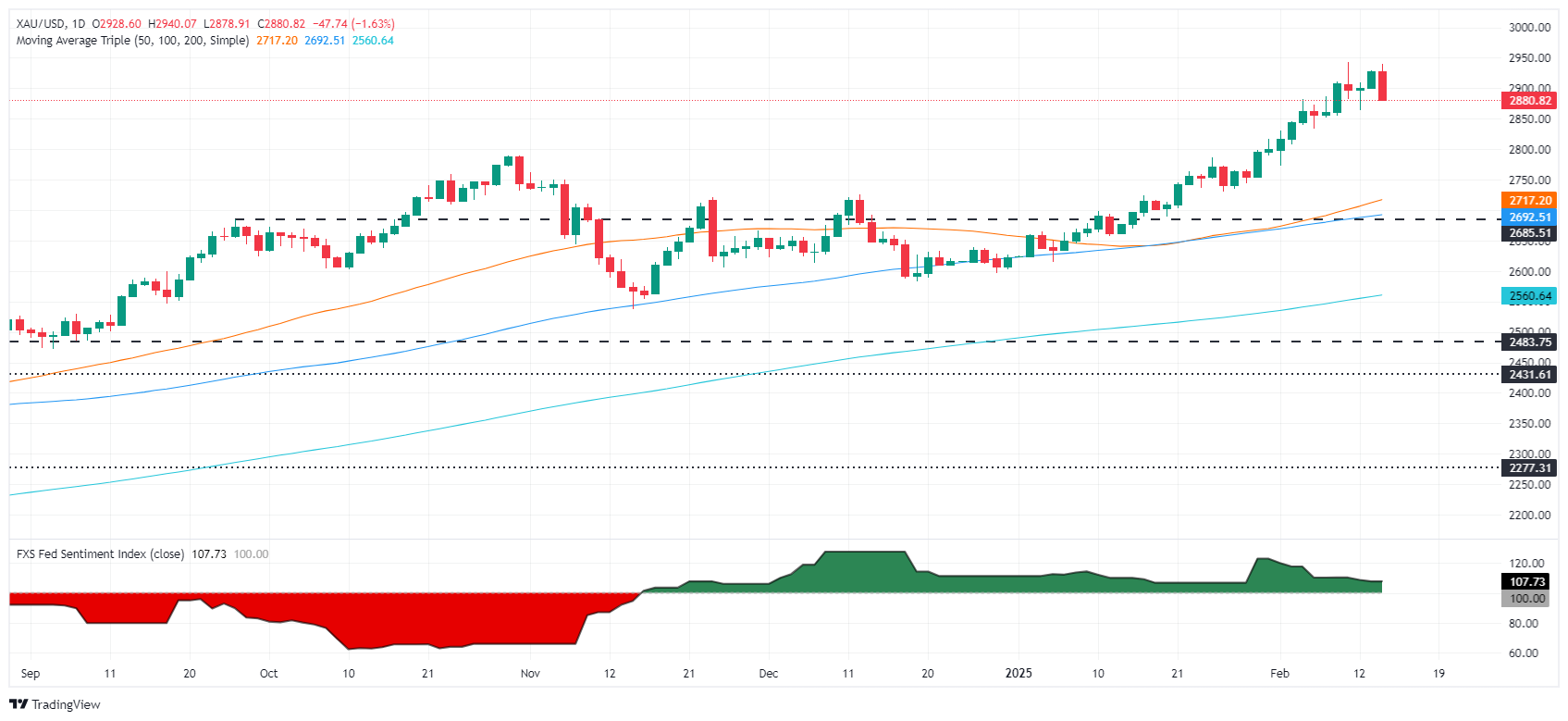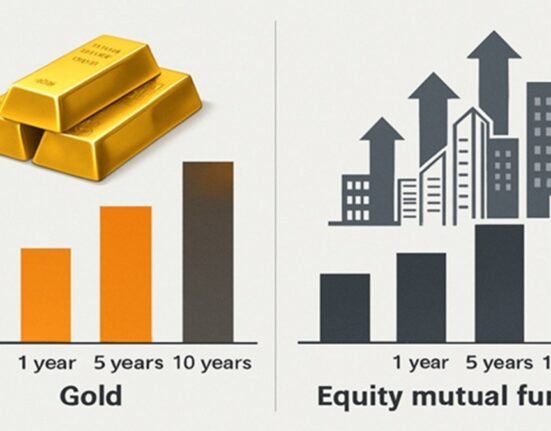- Gold set to end the week up 0.80% despite Friday’s drop.
- US Retail Sales plunge, fueling US Dollar weakness and lower Treasury yields.
- Investors price in over one Fed rate cut, boosting bullion’s longer-term appeal.
Gold price has fallen below $2,900 on Friday, yet it will end the week with solid gains of over 0.80% as traders book profits ahead of the weekend. Economic data in the United States (US) was mixed, although the Greenback touched yearly lows and US Treasury yields plunged. XAU/USD trades at $2,883, down 1.48% daily.
Retail sales in the United States plunged sharply in January, weighing on the Greenback, which continues to weaken across the board. However, the golden metal benefitted from traders squaring off their positions amid tailwinds for bullion, which usually push prices higher.
After the data, investors priced in more than one interest rate cut by the Federal Reserve (Fed). Consequently, the US 10-year T-note yield dropped six basis points to 4.472%.
Other data revealed that Industrial Production improved in January after registering disappointing figures in the previous month.
Daily digest market movers: Gold price dives amid failing US yields, soft US Dollar
- The US 10-year Treasury bond yield tanks five basis points (bps) and is down at 4.48%.
- US real yields, which correlate inversely to Bullion prices, dip four basis points to 2.041%, a tailwind for XAU/USD.
- US Retail Sales contracted by -0.9% MoM in January, sharply underperforming the expected -0.1%, despite an upward revision of December’s figure to a 0.7% increase.
- Industrial Production grew by 0.5% MoM in January, slowing from December’s 1% expansion but exceeding the forecasted 0.3% increase.
- The World Gold Council (WGC) revealed that central banks purchased over 1,000 tons of gold for the third consecutive year in 2024. Following Trump’s electoral victory, purchases by central banks surged by more than 54% year-over-year to 333 tons, according to WGC data.
- Money market fed funds rate futures are pricing 38.5 basis points of easing by the Federal Reserve in 2025.
XAU/USD technical outlook: Gold price pulls back after reaching an all-time high
Gold price uptrend remains intact, though it is retracing and has hit a two-day low of $2,878. It should be said that the Relative Strength Index (RSI) exited from overbought territory after staying there for most of February. Therefore, XAU/USD’s drop might be halted if buyers defend the February 12 daily low of $2,864.
This exposed the first key support level as the psychological $2,850 mark. Once surpassed, the October 31 cycle high turned support at $2,790 is next, followed by January 27’s swing low of $2,730.
Conversely, if buyers lift Gold prices above $2,900, the next resistance would be the all-time high at $2,942. A breach of the latter will clear the path towards $2,950, followed by the $3,000 milestone for the golden metal.
Risk sentiment FAQs
In the world of financial jargon the two widely used terms “risk-on” and “risk off” refer to the level of risk that investors are willing to stomach during the period referenced. In a “risk-on” market, investors are optimistic about the future and more willing to buy risky assets. In a “risk-off” market investors start to ‘play it safe’ because they are worried about the future, and therefore buy less risky assets that are more certain of bringing a return, even if it is relatively modest.
Typically, during periods of “risk-on”, stock markets will rise, most commodities – except Gold – will also gain in value, since they benefit from a positive growth outlook. The currencies of nations that are heavy commodity exporters strengthen because of increased demand, and Cryptocurrencies rise. In a “risk-off” market, Bonds go up – especially major government Bonds – Gold shines, and safe-haven currencies such as the Japanese Yen, Swiss Franc and US Dollar all benefit.
The Australian Dollar (AUD), the Canadian Dollar (CAD), the New Zealand Dollar (NZD) and minor FX like the Ruble (RUB) and the South African Rand (ZAR), all tend to rise in markets that are “risk-on”. This is because the economies of these currencies are heavily reliant on commodity exports for growth, and commodities tend to rise in price during risk-on periods. This is because investors foresee greater demand for raw materials in the future due to heightened economic activity.
The major currencies that tend to rise during periods of “risk-off” are the US Dollar (USD), the Japanese Yen (JPY) and the Swiss Franc (CHF). The US Dollar, because it is the world’s reserve currency, and because in times of crisis investors buy US government debt, which is seen as safe because the largest economy in the world is unlikely to default. The Yen, from increased demand for Japanese government bonds, because a high proportion are held by domestic investors who are unlikely to dump them – even in a crisis. The Swiss Franc, because strict Swiss banking laws offer investors enhanced capital protection.








